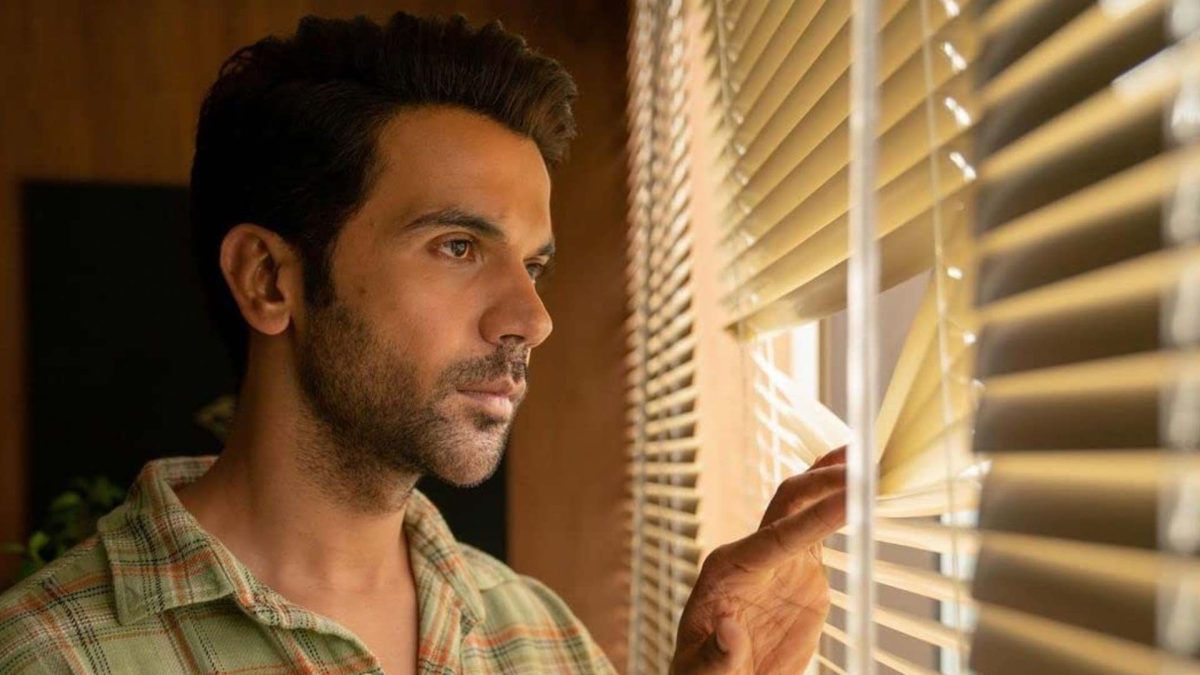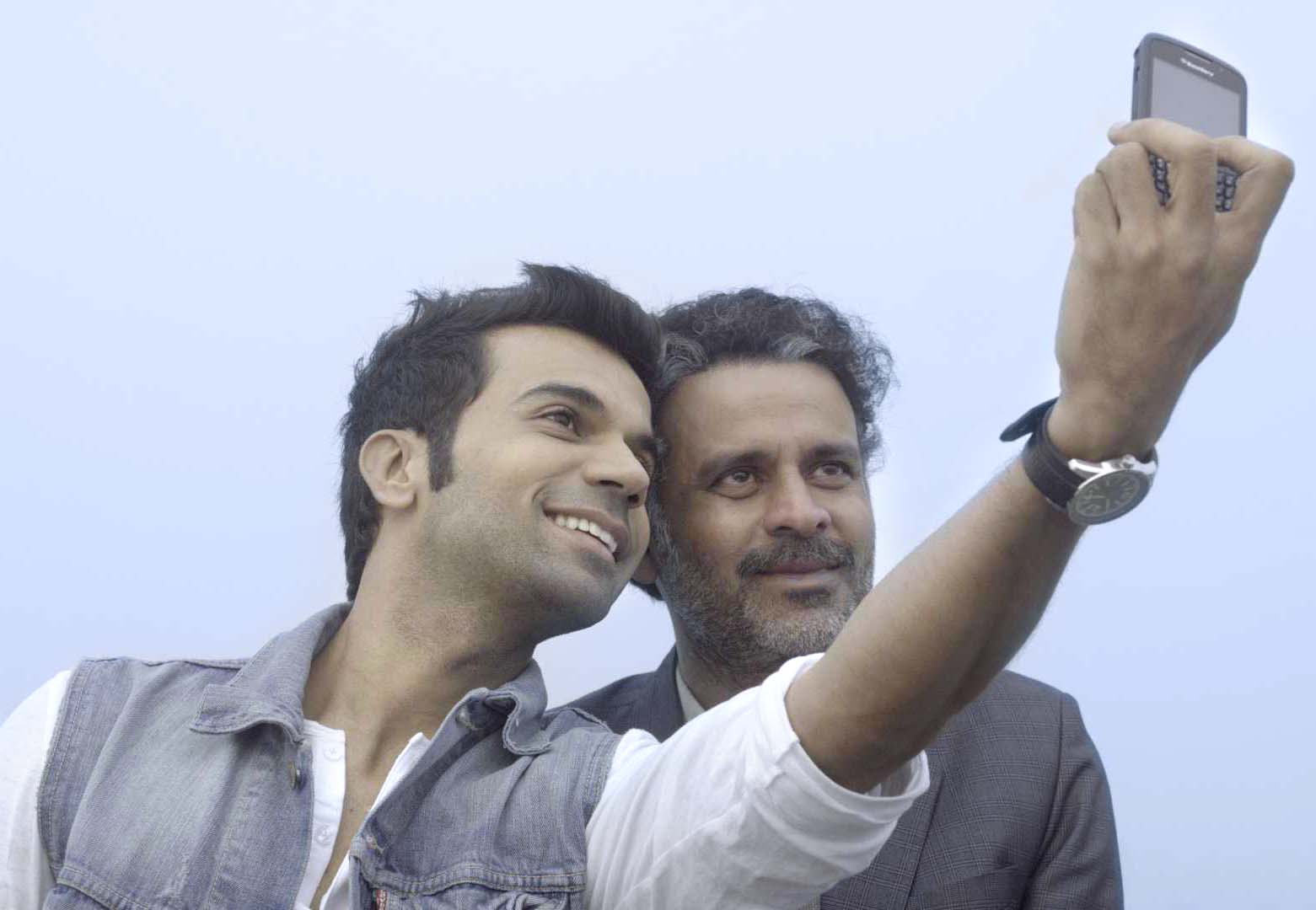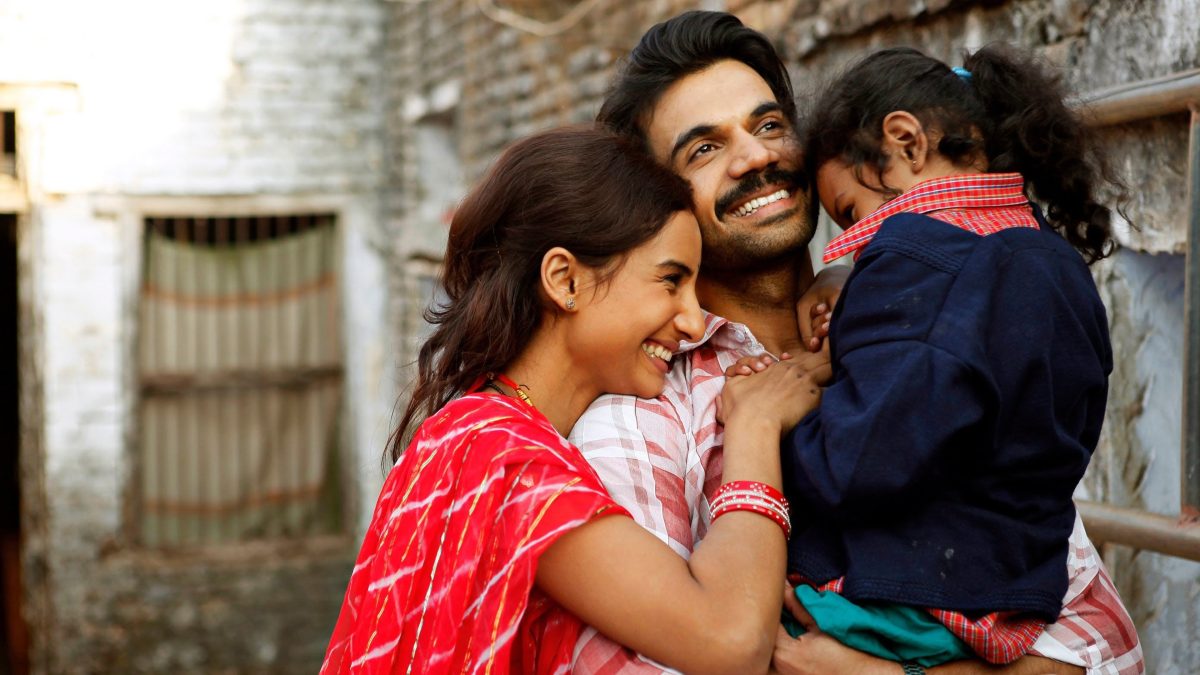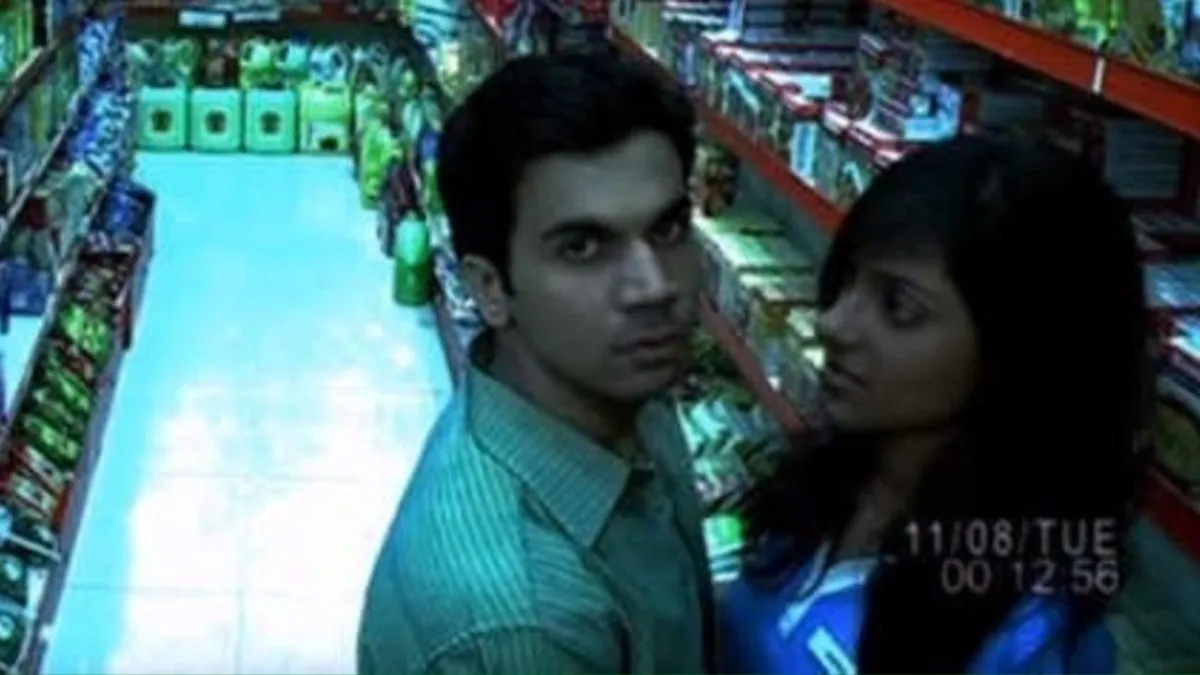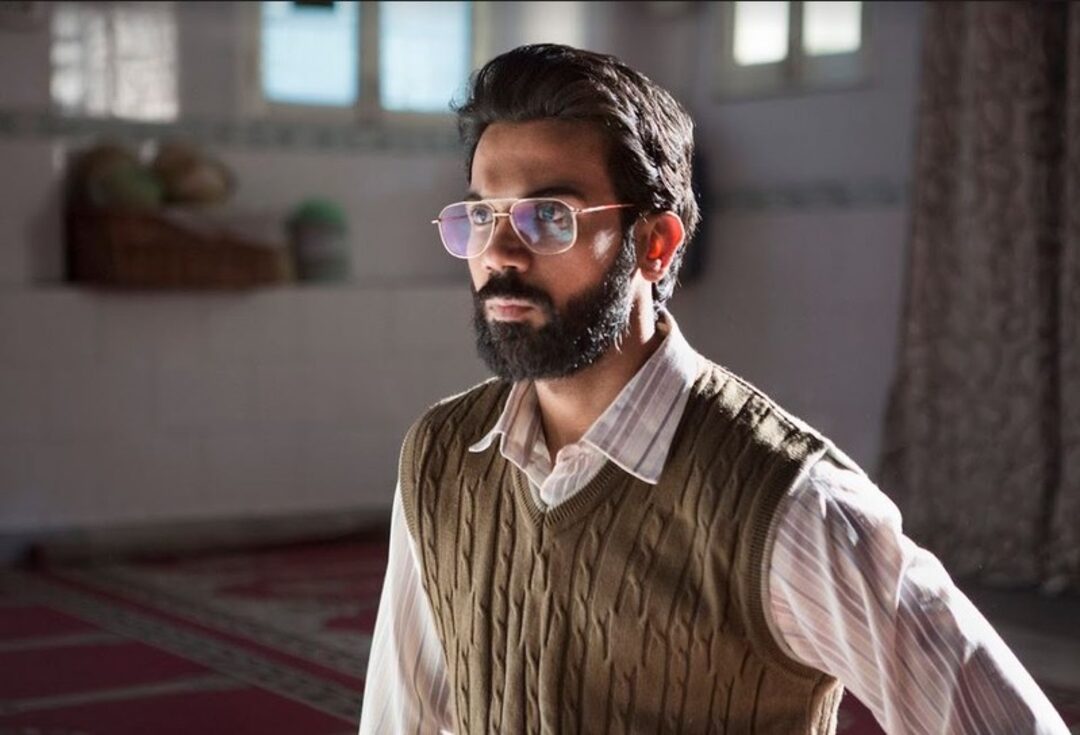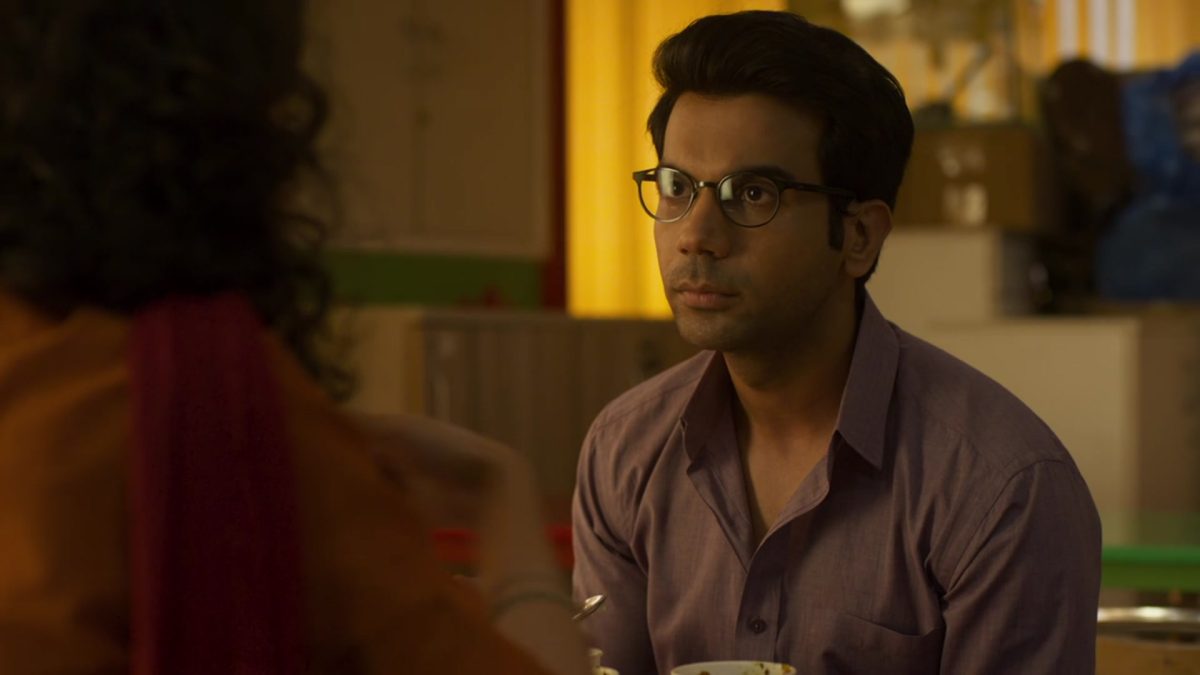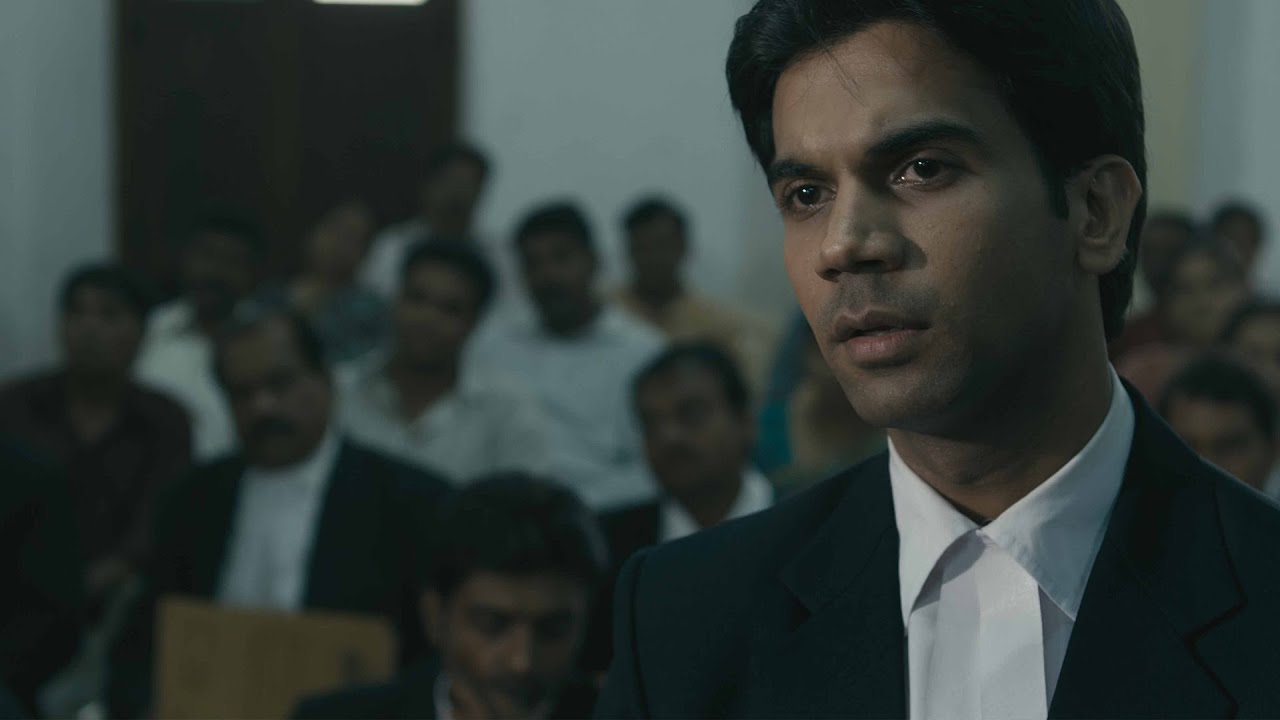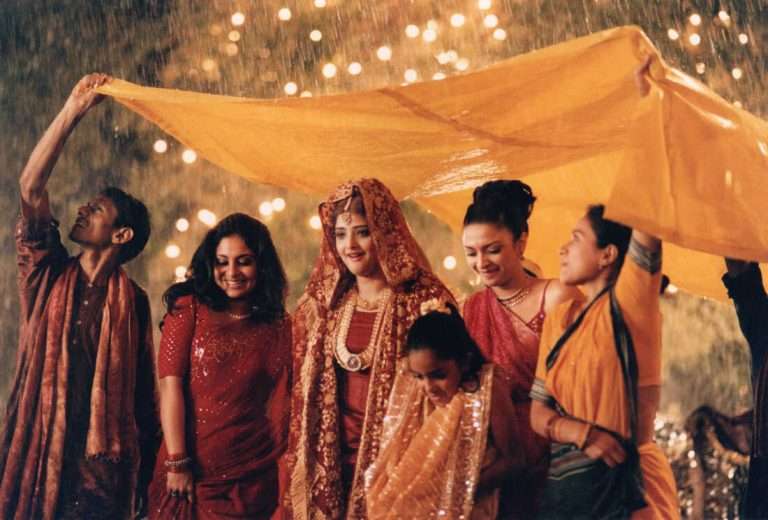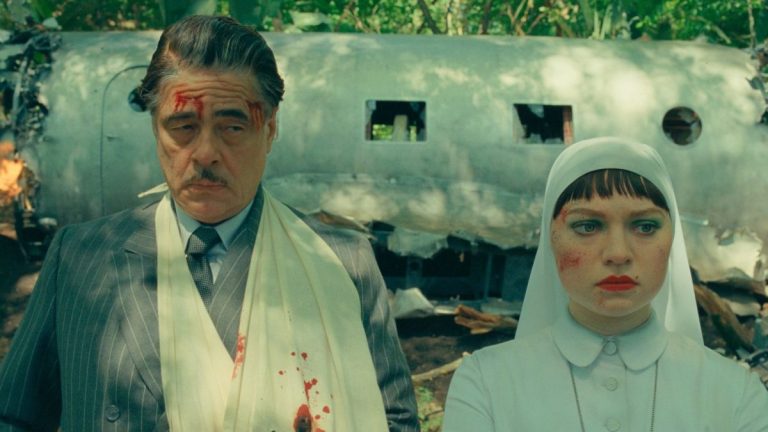Rajkummar Rao, formerly Raj Kumar, is an FTII graduate who made his break into Bollywood with a prominent character in Dibakar Banerjee’s 2010 film “LSD: Love, Sex aur Dhokha.” Since then, Rajkummar Rao’s career has curved upwards only – both poetically and politically, or to put it in other words, both commercially and aesthetically. He, of course, had been initially received by the audience as an actor who stars in the so-called urbane niche films, but Rao’s later choice of comedy-dramas established him in the popular discourse.
This discourse in Bollywood is currently trying to make itself free from the aesthetic and political remnants left by the popular cinema of the last few decades, especially the post-neoliberal Shah Rukh Khan’s romantic era. I won’t say radically but, somewhat fundamentally, the new comedy-dramas/black or dark comedies/pulp thrillers emerging from Bollywood are shifting popular film’s track and trying to move in an altogether different space—and, most importantly, they are trying to bring back explicit usage of politics in cinema and also trying to rewrite the gender roles (for instance, “Stree” (2018), which had literally vanished from the popular cinema in the “DDLJ” era. In this movement, Rajkummar Rao is one of the most cherished warriors.
The list I present before you now contains the top 8 Rajkummar Rao-starring films according to my personal taste, of course, but I must make it clear that one’s personal tastes are defined by politics. So, while picking the films for this piece, it was the concurrent politics that drove me to pick some of them and reject the others for the time being, keeping in mind that they might come up with much more importance/relevance than the current picks at a later time. It is, after all, the power of politics that sometimes makes a 20-year-old piece of art relevant in the current scenario and rejects a fresh artwork by labelling it as irrelevant.
8. Monica, O My Darling (2022)
Bollywood’s one of the recent occasional obsessions is with the pulp thriller genre. Since the time of the pandemic, this genre has started to dominate the OTT space, and every year, one or two murder mysteries wrapped in dark comic reliefs keep coming to the fore. And the best thing about these pulp thrillers is that they have still remained an experimental zone in the industry and have not become typecast.
Vasan Bala’s “Monica, O My Darling” is one such film. It stars Rajkummar Rao, Huma Qureshi, Radhika Apte, and others. “Jayant Arkhedkar” (Rajkummar Rao) is a veteran IIT graduate who has joined a robotics company, and his career graph has taken an enviable ascendency. But he soon finds himself in a deadly honeytrap with his two other colleagues.
One of the features of these pulp thrillers is that they have a distinct class character. You won’t see them taking place in semi-urban or rural space. They are invariably set in urban spaces and involve big shots. Now, as the characters are a class minority, their life problems and even the spaces where they dwell appear quite complex to the middle-class audience.
Also Read: 6 Movies You Should Watch If You Liked ‘Monica O My Darling’ (2022)
And on top of that, when an engaging mystery breaks out, the whole film—every inch of the screenplay—quite mechanically becomes intricately perplexing. Well, this is not to deride the efforts of the screenwriter or the director but to highlight the inner politics of this genre. To dilute the enigma and peek into the raw bones of the story, one needs to pay full attention. And one great thing about these films is that, since they are designed for OTT, they luckily don’t come up with intervals or other interruptions.
“Monica, O My Darling” is almost a smart film, but some plans from the maker’s end, I must say, have not worked till the end. Let’s put it this way—the plans themselves have barred the film from becoming a smart one. What especially made me feel a little bad for the makers is the use of songs, which sometimes makes you know beforehand and identify the culprits, while these films are made to outsmart you in the end. And if they fail to do so, the whole purpose actually fails.
If “Monica, O My Darling” doesn’t work for you, you only gotta feel bad for Vasan Bala. He has done everything that a good film deserves. Only if a few plans had been executed in perhaps a smarter way, the film would have won our hearts.
7. Aligarh (2016)
Professor Siras (Manoj Bajpayee) teaches Marathi at Aligarh University. Lately, he has become the Head of the Department and suspects that his colleagues are jealous of him because of his recent achievement. One fine evening, two hooligans break into his house and record his intimate moment with “Irfan” (Prashant Kumar), his friend, without his consent. They beat Irfan black and blue and made the news viral, which cost Professor Siras a suspension from his job just a few months before his retirement.
Here, “Deepu Sebastian” (Rajkummar Rao) makes his entry and tries to stand by Siras. Deepu is an intern at an English daily and passionately wants to practice journalism. Siras and Deepu slowly come to good terms. The story takes a turn when “Vijay Grover” (Ashish Vidyarthi), a lawyer who has earned a reputation for his argument that led to the abrogation of Section 377, enters. Grover wins Siras’s case, which receives nationwide attention, but Siras is doomed to end up in sheer tragedy.
Related Read: The 10 Best Hindi Films Of 2016
Homosexuality, in India, has always remained something that the layman sees with utter scepticism. Homosexuality was decriminalized by the Delhi High Court in 2009, but it was declared a criminal offence again in 2013 by the Supreme Court. Hansal Mehta, in “Aligarh”, doesn’t argue critically to abrogate Section 377. What he does is silently delve deep into a character who is homosexual and portray his pains and emotional sufferings, which makes the whole thing so poignantly charged that it becomes something more concrete than an argument and even stronger than a courtroom drama, from a humanist perspective.
6. Citylights (2014)
In a world dictated by corrupt industrialists and unapologetic frauds, there’s no space for the working class. Hansal Mehta’s “Citylights” (2014) is a remake of the Sean Ellis-directed 2013 British film “Metro Manila”. Mehta’s remake is set in Mumbai and stars Rajkummar Rao, Patralekha, Manav Kaul, Pramod Pathak, and others.
Still a young Turk, Rajkummar Rao steals the show in the film as ‘Deepak’, who has been a former driver in the Indian armed forces but now works for a security agency based in Mumbai. After leaving his job in the army, Deepak had to go through a lot. Failing multiple times to pay back the loan, he has been beaten and humiliated publicly. Along with his wife and a little daughter, he decides to leave Rajasthan and move to Mumbai, having a preconceived notion in mind that no one dies of hunger in Mumbai.’ But epithets are an invention of bourgeois art.
They don’t simply work for the impoverished. From the very beginning in Mumbai, Deepak had to face hardships. Initially, after getting deceived by a broker, he starts working as a labourer while his wife (Patralekha) takes up the job of a dancer in an orchestra bar. But fate had different plans for them.
Soon, Deepak joins a security agency and finds himself pampered by his senior (Manav Kaul). As things unfold rapidly, Deepak finds himself in a dangerous web of larceny, which in the end takes his life. In short, “Citylights”, or the decision to remake “Metro Manila”, is Hansal Mehta’s radical criticism of the modern metropolis, which lures the impoverished to enter it and, in turn, treats them with monstrous brutality.
5. LSD: Love, Sex aur Dhokha (2010)
Dibakar Banerjee’s bleak film that dives deep into the dystopian side of our society, “LSD: Love, Sex aur Dhokha”, is Rajkummar Rao’s first major project. Three loosely connected vignettes in the film put forth the moral bankruptcy of a society. First, an amateur filmmaker—obsessed with his camera; then, an opportunist delinquent; and then, a base singer—tie the central argument of the film that tries to present before you a threefold concurrent problem, which is different in nature but can be attached to each other if studied closely from a class perspective.
Also Read: The 10 Most Disturbing Hindi Movies Ever Made
Three different stories where either an individual or a couple is shown as a victim of class exploitation. Rajkummar Rao has here played the role of a departmental shop employee named “Adarsh,” who, by defeating his moral dilemma, in the end takes advantage of a girl sexually and records the intercourse on a hidden camcorder, only to sell the footage and earn some bucks. Dibakar Banerjee’s “LSD” was way ahead of its time because, in the age of unlimited access to the internet, it has become a regular scam. But back in 2010, one had to have some critical understanding of society in order to create something like “LSD”.
4. Omerta (2018)
It happens sometimes that you like a film so much and feel irritated by the fact that the entire world considers it a bad film. When it comes to “Omerta”, I find it quite strange that almost all my fellow film critics, acquaintances, and friends don’t like the film at all, and on top of that, some of them say it is a bad film with an obtuse screenplay.
The problem, perhaps, with “Omerta” is that people wanted Hansal Mehta to go under the skin of Ahmed Omar Saeed Sheikh—the British-Pakistani terrorist on whom the film is based—but Mehta refrained from doing that. I find it a good film because the film’s intention was not to dissect an Islamic fundamentalist leader’s character, accused of having a hand in the infamous 9/11 attacks, but to show us the growing tensions of Islamic terrorism throughout the world through a character’s point of view.
“Omar” (Rajkummar Rao), in the film, decides to drop out of the London School of Economics and includes himself in the holy crusade led by Al-Qaeda, which, to date, has done nothing good for humankind. Omar’s decision to quit LSE gives his father pain, who wanted his son to complete his education and then help his miserable Muslim brothers and sisters in a humane manner. This unusual aspect of the terrorist’s family has hardly been depicted in any contemporary Indian films.
Although this is not why I liked the film. I accrued some respect for “Omerta” because it puts forth Omar’s bildung parallel with the many unfortunate instances happening throughout the world where innocent Muslims were being killed.
This kind of visual argument asks you to understand the ill leadership Islamic fundamentalist organisations have had, who, instead of using a bright student like “Omar” in a diplomatic and gentle way to fight the cruel forces, decide to inculcate religious hatred in them and push them towards a war that is bound to end up crushed by the armed forces. I think I know why—you know it too, I believe—”Omerta” is one of the less talked-about Rajkummar Rao films these days, but I can’t shy away from saying that it is one of his best performances ever.
3. Trapped (2017)
After “Lootera,” it took Vikramaditya Motwane almost half a decade to make his comeback with “Trapped.” Co-written by Amit Joshi and Motwane himself, “Trapped” portrays a harrowing incident of “Shaurya” (Rajkummar Rao) – a call centre employee – who mistakenly locks himself in a flat.
In this film, Rajkummar Rao is a lone warrior who, after mistakenly locking himself in the flat, realizes the looming dangers. What made me fall in love with this film is Motwane’s portraiture of a helpless, well-mannered man inside a modern architecture, his own invention, shedding his well-mannered skin in order to survive.
Also Read: 7 Reasons Why You Should Watch Trapped (2017)
Marooned by a fraudulent middleman, the harrowing experience inside the empty apartment, unnoticed by the sole watchman, changes Shaurya forever. Alokananda Dasgupta’s melancholic score made me love the film even more. It channels out Shaurya’s suffering and asks us to read the screenplay’s inherent politics that intend to expose the rotten nexus of middlemen in a metropolis on the one hand, and also highlights Shaurya’s trauma that will haunt him throughout his life like a tedious argument.
2. Newton (2017)
Amit Masurkar’s sophomore feature stars Rajkummar Rao along with Pankaj Tripathi, Raghubir Yadav, Sanjay Mishra, and other potential actors. Here, Rao embodies the character of a physics graduate turned government employee, “Newton Kumar”, originally named by his parents “Nutan Kumar”, who leads a team, as a presiding officer, to set up a makeshift booth and conduct voting in the dense forest of Chhattisgarh – notorious for frequent ruckuses created by Maoist militants.
In “Newton,” we find the ideal Indian government employee whom we seek in the clerks and employees around us, but do not usually come across. The relationship an Indian layman shares with a government employee is a complex one. An odd political/social space always separates them, and corruption, deliberate sluggishness, and irksome conversations reside in that middle space. “Newton Kumar”, honest and to some extent arrogant, tries to eradicate that oddly existent space which costs him heavily.
You Should Read: Amit Masurkar’s ‘Newton’ is an Exploration of the Grey Spaces in the Sphere of Duty
But, even after paying the heavy price, “Newton” refrains from budging from his principles and boasts of the awards he has earned from the government. Rajkummar Rao’s beautiful, at times poignant, portrayal of “Newton Kumar” places the character in the realm of ideal superheroes, needed at this political juncture of our country to protect the sanctity of the constitution.
1. Shahid (2012)
“Shahid” is a testament to the fact that Rajkummar Rao belongs to the greatest pedigree of actors. He was yet to become “Rajkummar Rao.” The title card names him as “Raj Kumar” and places him among some of the greatest actors of our times, such as Kay Kay Menon, Vipin Sharma, Tigmanshu Dhulia, Mohammed Zeeshan, and others. Yet he delivers one of his career-best performances.
Every year, only a handful of people, among the vast population of our country, remember Shahid Azmi. He was a lawyer with one of the best acquittal rates of all time and a human rights activist. Shahid’s lived experiences of communal violence in the aftermath of the Babri demolition led him to join, momentarily, a separatist fundamentalist organization in Kashmir. His sojourn in the militant camp cost him seven years of incarceration.
During his sentence, Shahid met many people, including Ahmed Omar Saeed Sheikh, whose name is linked with the murder of The Wall Street Journal’s reporter Daniel Pearl. But wise people inside the jail safeguarded Shahid from getting brainwashed by people like Omar and asked him to continue his education. After getting acquitted, Shahid served his whole life defending innocent citizens, who were often picked up by police in the aftermath of terrorist attacks or communal violence. Shahid took a road less travelled and one full of danger. He was assassinated on 11 February 2010.


